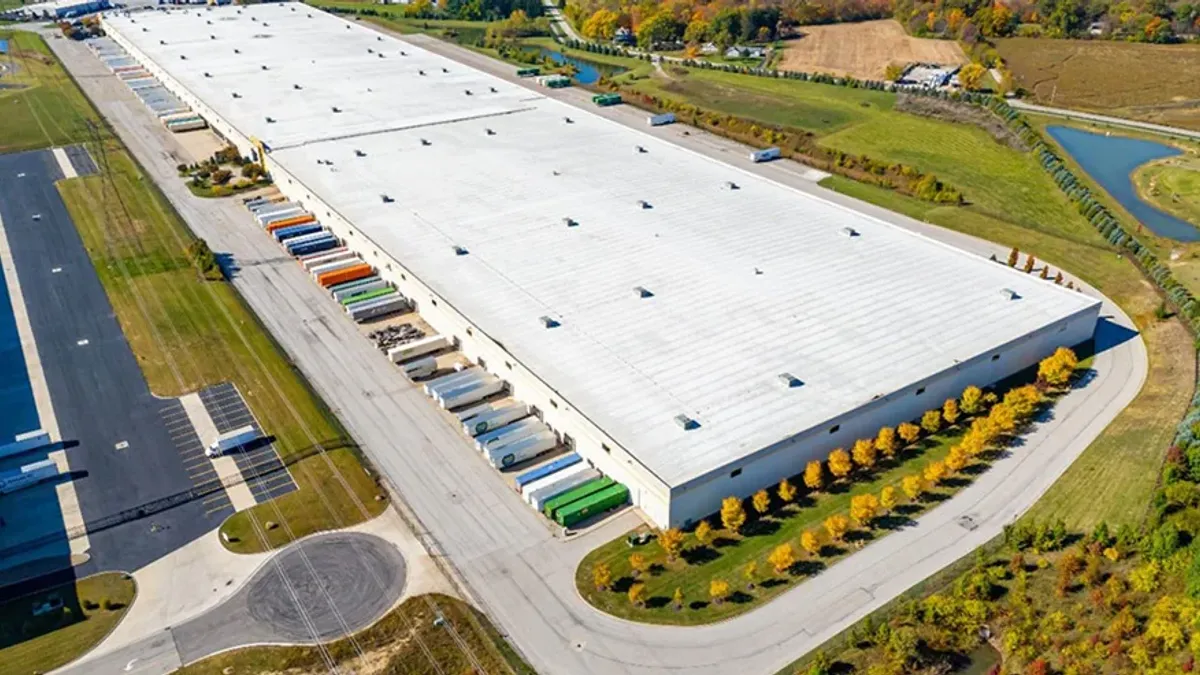Every shipper was warned a capacity shortage would soon hit the trucking industry.
Like a boogeyman, the expected impact of the electronic logging device (ELD) mandate has loomed large to shippers for months. Rates, they knew, would go up — but by how much? It was clear the most ardent owner-operators would leave the market place in protest, but for how long?
Now, the capacity shortage is here — and it’s not going away any time soon.
See, ELDs offer a convenient excuse for an industry facing a chronic under-capacity. But supply chain managers with decades of experience know trucks are always hard to get — some days, months and years are just tougher than other times.
When a regulation like the ELD mandate comes about, is it proper to fret about a looming shortage? Of course, because that's the reality and it will have effects. However, is that really the problem the industry faces?
To answer that question, Supply Chain Dive spoke to Mark Montague, Industry Pricing Manager at DAT, and Avery Vise, Vice President of Trucking Research at FTR, to lay bare the fundamental problems that haunt the trucking industry, and ask what it will take to correct it.
Why do we have a truck capacity shortage?
The industry’s current shortage can be broken down into three main reasons, according to Montague:
- A strong economy
- Unfavorable winter weather
- The ELD mandate
But behind these three indicators lies an even bigger problem: the driver shortage.
“We’re almost always in an environment in which the number of drivers is actually below what is fully needed,” said Vise.
Every truck needs a driver — and even if the promise of autonomous trucks delivers, high cargo theft rates mean it may take a long time for shippers to accept leaving a shipment unguarded on the road.
In other words, despite regulation or advances in technology, the number of trucks on the road will always follow the number of drivers in the labor market. And that, according to experts, is the real problem the industry faces.
Why is there a driver shortage?
At the end of the day, the driver shortage can be explained by looking at the industry’s turnover rates and the nation’s labor statistics.
“Turnover rates never seem to get down below 40%,” said Vise. “It’s just a matter of: (trucking) is not the most attractive job, and pay is not commensurate with responsibilities.”
To meet production demand, an industry must be able to pay competitively for the type of work involved, retain a stable labor base and consistently recruit new workers. When it comes to trucking, though, few of those conditions are often true.
Take a few figures: the average trucker gets paid roughly $41,000 annually, is more than 55 years old, and often drives 10-or-so hour shifts.
“It does not seem a profession that attracts millennials. It doesn't suit their lifestyle,” Montague said.
The ELD mandate only exacerbates this problem. Before the rule, a trucker could squeeze in more miles by not recording waiting, in traffic or elsewhere, on their paper logs. Now, ELDs automatically record that time, reducing the miles a driver can travel under regulation. A stricter enforcement of such regulations could result, in some cases, 10% fewer miles, or more than $100 a day in lost productivity.
“You can’t think of the driver market as being a closed system,” according to Vise. “A driving job is competing with a blue-collar job in construction, and to some degree manufacturing in non-union places.”
Driver availability tends to follow the unemployment rate in that way. “When we saw unemployment rates of near 10%, demand wasn't that high either. When demand is low, driver supply is fine — and vice versa,” Vise added.
When the economy is suffering, and unemployment is high, workers are more likely to take jobs that don’t perfectly match their ideal work. Trucking pays competitively, even if the lifestyle is hard. It’s a perfect and stable gig for a few years.
But when the economy is as stable as it is now, the trucking industry suffers a supply-demand imbalance. Truckers who took the job as a gig may leave the market to work other more suitable gig economy jobs — such as construction or manufacturing.
Unfortunately, this zero-sum dynamic theoretically happens as the economy is ramping up. Those same manufacturers that need workers to fill their lines, or construction firms recruiting to meet a spurt of new real estate investment, also need more trucks on the road to transport the product.
“Truck driving is a double-edged sword in that (while) it’s easy to get into, it’s also easy to leave because you know you can get back into it,” said Vise.
Is there a solution?
“If you look at everything that’s in place now, it’s kind of hard to imagine a solution,” Vise added.
Several government initiatives may help, but likely not fix the problem.
A new provision in the tax law could help companies turn saving on equipment expenses into more drivers being hired, as one example, but that won’t help get more drivers on the market altogether or improve the turnover rate, Vise said when asked for ideas. Montague added the military will continue be a powerful source of new drivers, given veterans’ experience driving heavy vehicles.
Technology may also play a role in the future — think autonomous or platooning vehicles — but both Montague and Vise said it would take years before it begins to have a real effect.
“Certainly longer term, it’s going to be beneficial,” said Vise. Self-driving technology could help reallocate the driver workforce, and change the type of work they do to make it more attractive.
To date, however, systems remain so complex, a fully trained driver remains necessary. For example, Montague asks, what if a system — whether a camera or sensor — ceases to function? A driver must still be available and ready to take command.
“I think it’s not a revolutionary, but an evolutionary (shift)” in the trucking industry, Vise agreed.
In the meantime, play the market
The trucking industry has always seen rates ebb and flow with the economy.
While this year may have seen an unseasonably tight market, shippers should always be looking for a shift in market fundamentals, in case it provides a future rate advantage.
Add together the construction spike following Hurricanes Harvey and Irma, with winter weather and strong consumer demand, and it yields a perfect economic tailwind for the trucking industry.
“The fact that rates are up in places like the Southwest part of the U.S., Texas and California, indicate that it’s not just a weather-related phenomenon,” said Montague. “This is a nationwide phenomenon.”
However, those combined trends are not unheard of in January, as weather challenges and first quarter activity tend to combine into periods of tight capacity.
Shippers looking to gauge the market should look to the first few weeks of February.
These provide a better bellwether for the state of freight, as they are generally “the low point of the year for freight activity,” Montague said. “If it’s tight in February, that’s pretty much a warning sign to really go into corrective mode and be more proactive because it’s going to be a tough spring and summer.”






















